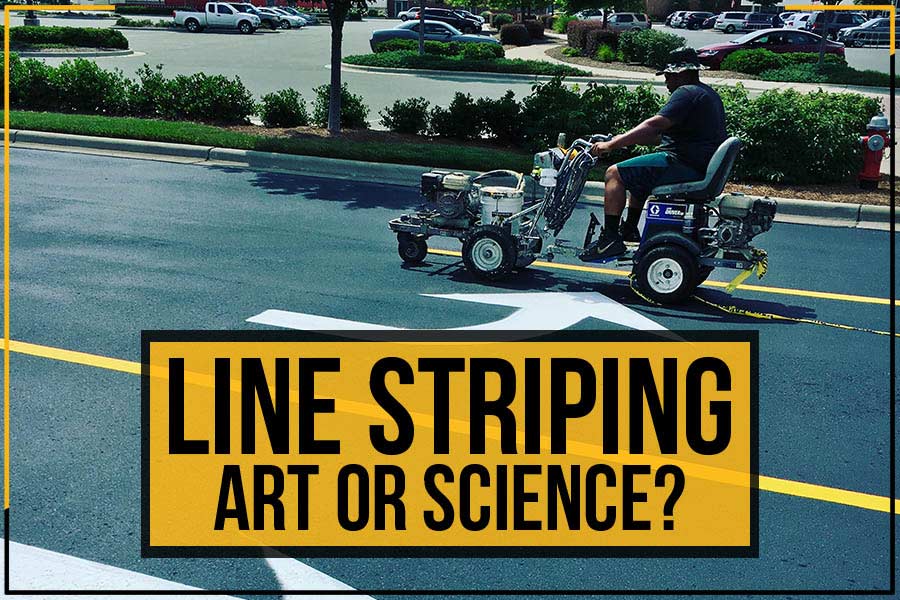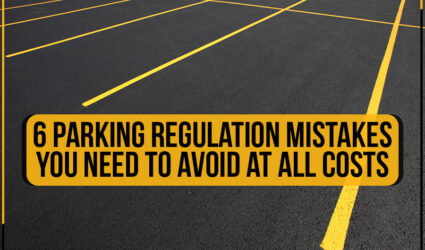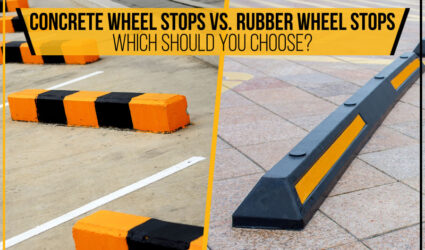Within the pavement marking industry, it’s often said that line striping is one of the easiest ways to earn an income. Perhaps so, but we like to think striping is more of a craft that must be perfected like any other professional offering.
Professional Line Striping vs. Hand Painting
Line Striping was first introduced in the 1950s as a way to impact the traffic flow due to the influx of vehicles on the roads and the increase in vehicle-related accidents.
In the old days lines were drawn or rolled on with a paint roller brush and pan — using the same system that homeowners use to paint the spare bedroom or an artist uses to paint a mural on the side of a town square building!
Not to demean the beautiful hand-crafted art from the world’s best artists who can certainly paint straight, uniform lines as attested to in the artistic line drawing of the pagoda on the left . . .
But it would take stack upon stack of artists, drawing lines day in and day out across many, many months . . . to achieve the professional levels of line striping quality we achieve in mere hours with today’s technologically advanced pavement marking machines.
Of course, a paint-by-hand system (whether using paint rollers or artistically drawn lines) can in no way keep up with the rate of traffic in our modern world. Neither striping by hand nor using second-rate equipment can handle the demands of fast-paced or even stop-and-go traffic.
Line Science Technology Applied by Line Artists
Over 60 years later the purpose behind line striping is still the same:
Uniformity of the markings is an important factor in minimizing confusion and uncertainty about their meaning, and efforts exist to standardize such markings across borders. “Road Striping”
Pavement marking technology
Striping Lines visible both day and night
Parking lot lines easily visible even at night
What has changed is the science of pavement marking technology and the means by which striping is applied.
Paved roads, parking lots and parking decks all require uniform markings that are consistent and equally visible during the day and night.
Technological advancements in both equipment and paint ensure these points.
Protecting Your Investment With Top Quality Equipment
Using Graco to finish up a line in the UNC parking deck project
Maurice uses his Graco 3900 to finish up a line in UNC (Chapel Hill) parking deck project
Precision Striping owner, Maurice Webb, says,
I’ve been striping for 15 years. I have used some of the best and worst machines.
Why We Use Graco Line Lazers?
For the best paint application and smooth finish, we invest in top quality equipment. For striping lines in high-traffic areas, not many come close to the Graco 3900.
We use the Graco Line Lazer 3900 pavement marking line stripers because they apply paint at 3300 lbs of pressure per second, enough pressure to lay down a line that can withstand heavy traffic over long periods — like that sustained in the University of North Carolina’s (UNC) parking deck pictured above. For consistent, crisp and long-lasting lines we know striping with GRACO is the best choice.
At Precision Striping and Lot Restorations, we want our customers to know we use only the best equipment for their projects. While the quality of paint and machine cover the physical requirements, skilled line striping craftsmen is the other factor that ensures property owners gain the benefits of pavement marking technology. To protect your investment, we make the necessary investments in both craftsmanship and quality equipment.





